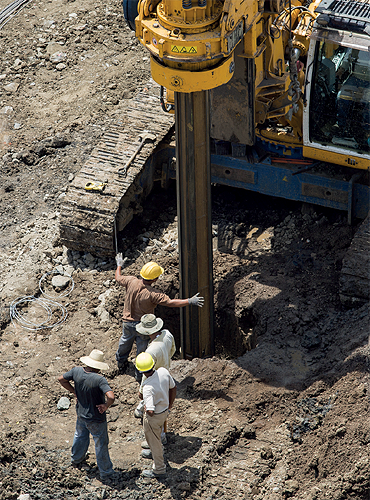
Going deeper underground
During the Cold War, there were a variety of things that could be described as little more than… strange. From face mask disguises to threats to detonate nuclear warheads on the moon, there was a very real risk of events boiling over into a full-scale global, nuclear war.
One of the weirdest events, however, was the construction of the Kola Superdeep Borehole in Russia, in 1979.
The Kola Peninsula sits on the north-western outreaches of modern-day Russia, near to the Norwegian border. The Soviet Union first began drilling boreholes there in May, 1970, using the now archaic Uralmash-4E drilling set-up. Officially, this was done for scientific research (just as the US’ equivalent project was for scientific research), but really it was a show of might.
The height of the cold war saw the USA and the Soviet Union pitting themselves against one another in increasing shows of social, political, economic, technological and military peacocking. The most famous example of this is the ‘Space Race’, but it extended to so many other areas, as well. If there was something to be the biggest or best at, you can guarantee the two nations were trying their hardest to secure that title.
The deepest borehole wasn’t actually drilled until almost two decades later, however, in 1989. This borehole was named SG-3 and it’s fair to say that this borehole gave the premise of the ‘journey to the centre of the earth’ a fair crack of the whip.
The Depths of SG-3
In terms of true vertical depth, SG-3 came in at a staggering 7.619 miles – over 12.2 Km in metric measurements. They didn’t want to stop there either! Not content with simply holding the record, the Soviets were intent on drilling even deeper. Unexpected changes in density and temperature, however, made this unfeasible.
Although its record in terms of measured depth has now been surpassed, SG-3 still retains the world record for deepest ever borehole, in terms of true vertical depth. To drill as deep as they did, the Soviets had to design an entirely new drill, as their previous technology wasn’t capable of reaching those new depths. The depth of SG-3 was so renowned, in fact, that its own commemorative run of stamps were produced following its construction.
Present-day borehole drilling services
That original borehole has now been welded shut (though you can still find it, if you’re curious) and the project was shut down 13in the ‘90s, coinciding with the Soviet Union’s dissolution. Today, there are numerous deep borehole projects. Perhaps the most exciting of which being a project to drill through the earth’s crust and into the mantle.
The crust is the outermost part of our planet and acts exactly like its name – a crust. Beneath is the mantle, which comprises around 85 per cent of the earth’s overall volume. No drilling project has ever managed to reach the mantle, but this looks set to change this decade. The Japanese drilling vessel Chikyū is part of the Integrated Ocean Drilling Program (IODP). Its ultimate plans are to drill beneath the earth’s crust, at one of its thinnest points, in what would be a momentous occasion for the geotechnical community.
John Rodgman is Managing Director at the geotechnical drilling company, Borehole Solutions, a leading provider of geotechnical drilling solutions across the United Kingdom, with over two decades’ worth of experience. Whatever the site investigation needs – whether it be the smallest of city basements or a large stadium project – Borehole Solutions will provide the bespoke and tailored service that you require. Borehole Solutions are proud members of various prestigious industry bodies – the British Drilling Association, CHAS, RISQS and Construction Line, to name but a few.
For more information, please see www.boreholesolutions.co.uk